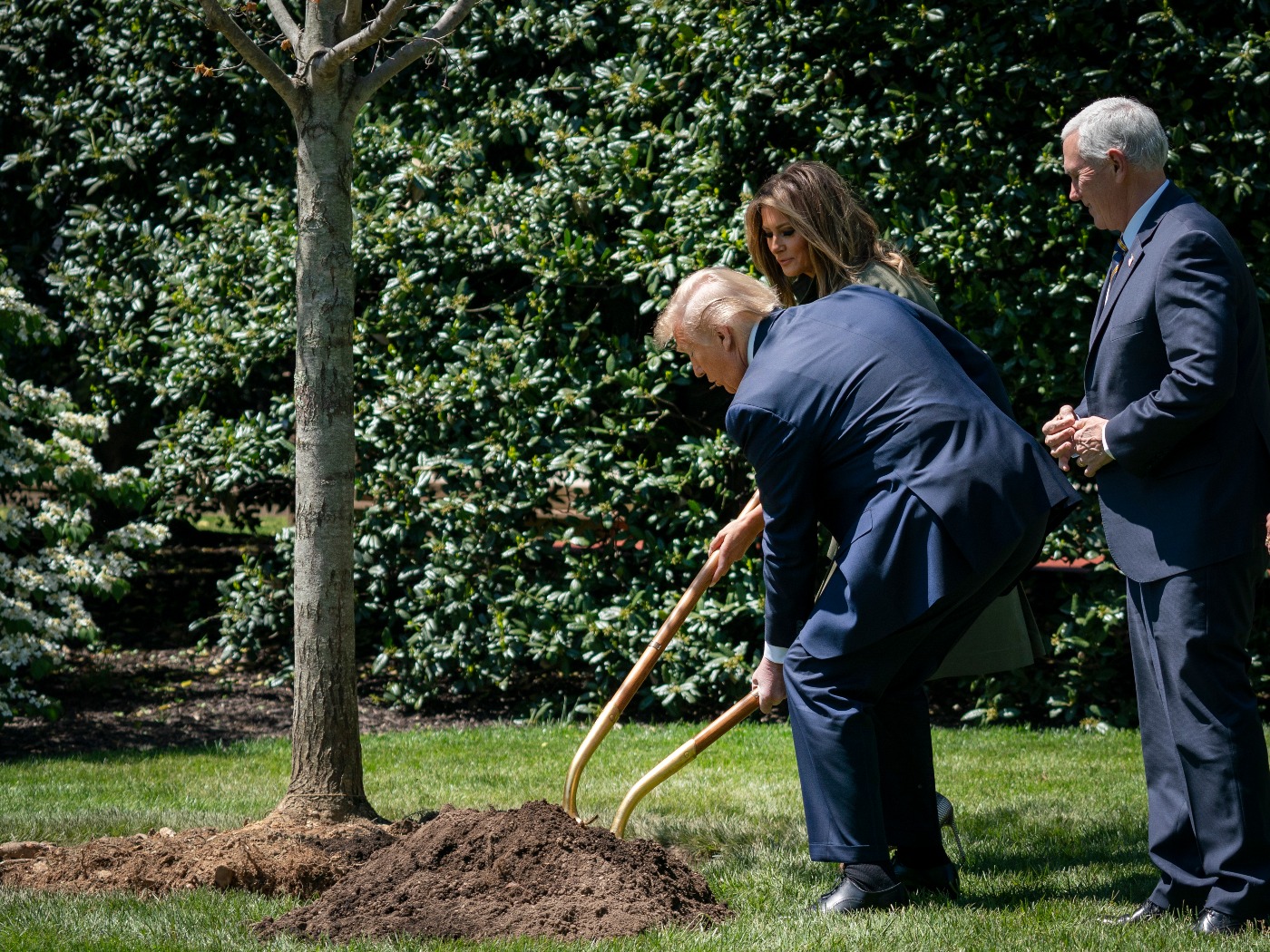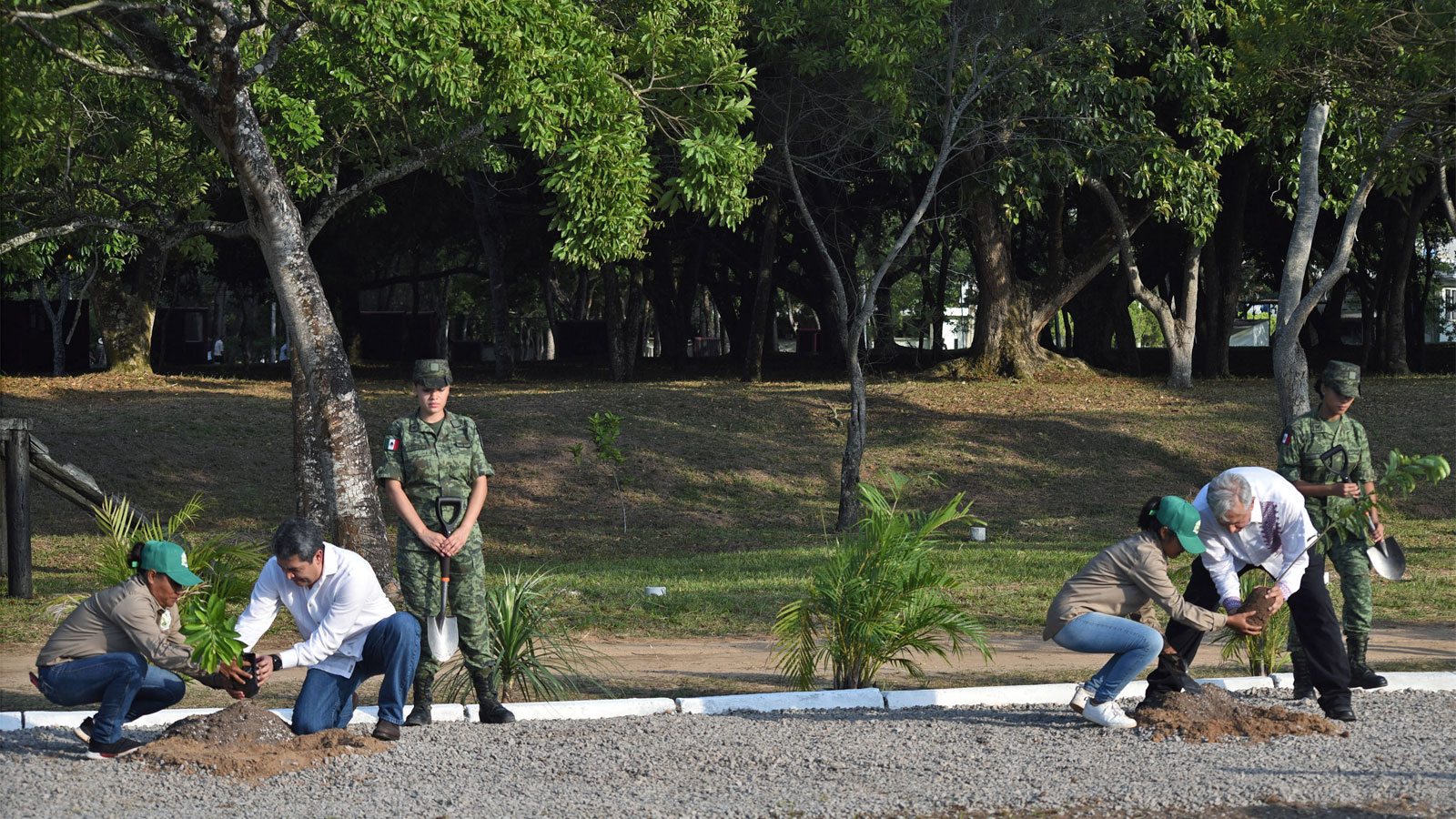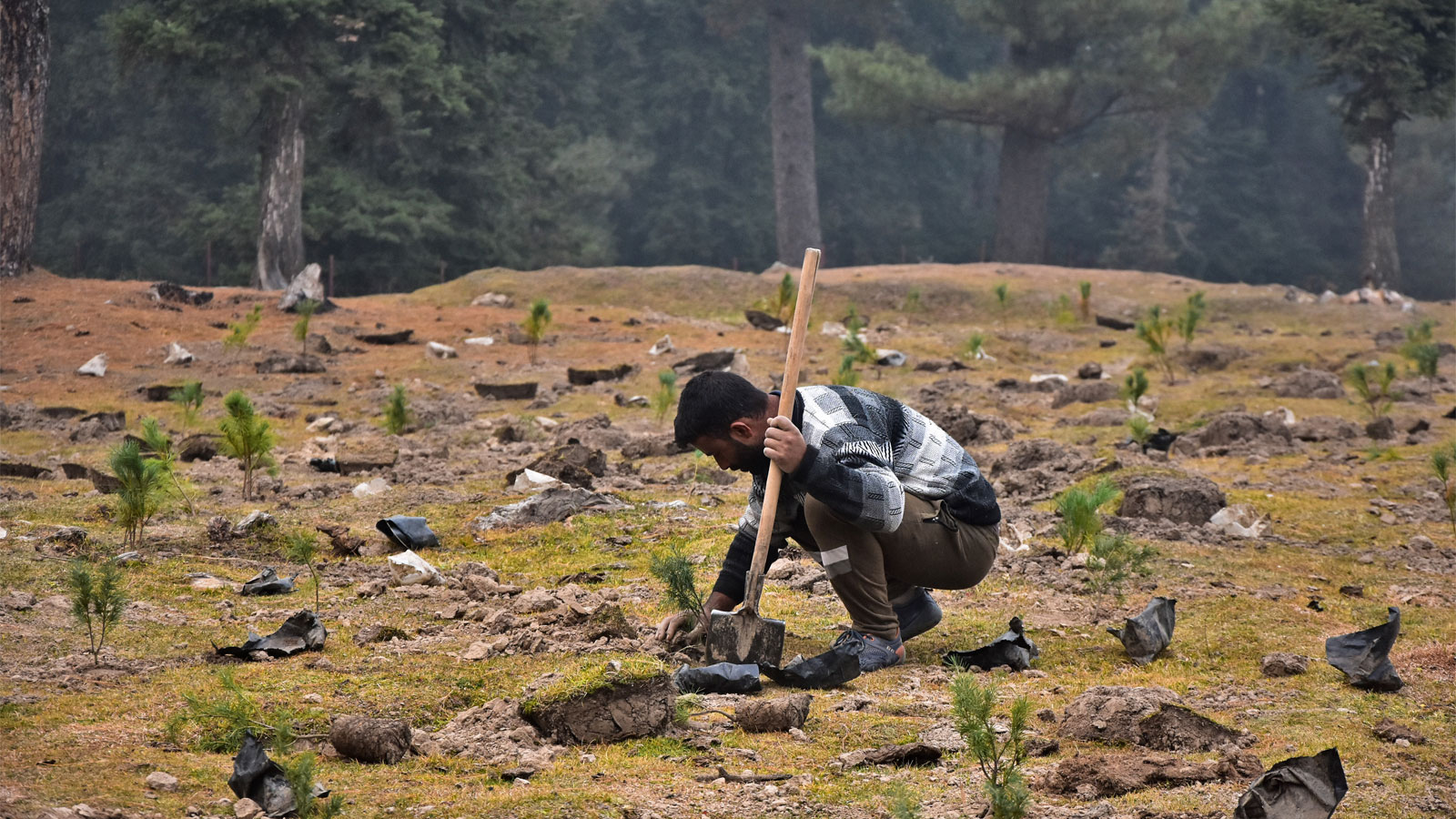Want to do something good for the Earth? Plant a tree. This common belief, once an inspiration for Earth Day T-shirts, now forms the basis of a booming global industry. As countries try to meet their climate change goals and businesses look to cancel out their carbon dioxide emissions, almost 2 billion trees are being planted every year.
Trees lock away carbon in their trunks, branches, leaves, and roots, making them an excellent partner in countering climate change. A report out last Thursday found that the understudied cooling effects of trees — like their role in the water cycle and the compounds they emit — have kept the planet half a degree Celsius cooler, not even accounting for the carbon dioxide they capture.
People have gotten so excited about taking on climate change by planting trees everywhere — with plans underway to grow a forest across the whole width of Africa, cover a third of India in forests, and plant 1 trillion trees around the world by 2030 — that the world is approaching a seed shortage.
But a growing body of research has cast doubt on all these efforts, raising questions about tree planting as a fix for the climate crisis. Mass planting efforts have often resulted in dead trees, degraded ecosystems, and — in at least one case — actual deforestation. The research suggests that even though trees themselves are great at capturing planet-warming gases, planting them is often another, more complicated story.
So should we just leave the tree planting to nature? Or do trees need us after all?
The changing math
There are plenty of ways that trees make our lives better. Studies show that their presence makes people happier and healthier. In cities, trees provide much-needed shade on hot summer days, remove pollution from the air, and help manage stormwater, reducing runoff and improving its quality.
Forests have long been seen as part of the solution to climate change, starting with the Kyoto Protocol in 1992, but ambitions have grown in recent years. A study from 2019 found that a global planting program could sequester two-thirds of the greenhouse gases in the atmosphere emitted by humans. The article was covered by hundreds of news outlets with optimistic headlines about trees’ “mind-blowing potential” and fueled another surge of planting programs.

Some scientists questioned that study, arguing that it had overstated where all these new forests could be planted. Others pointed out that calling forestation the “most effective climate change solution to date” overlooked a more obvious, trusty solution: reducing fossil fuel emissions. The original authors corrected their paper, acknowledging the oversight and clarifying that adding more forests could only absorb about half of what they’d projected.
No one disputes that trees store a lot of carbon, but some experts say that these estimates tend to be overly optimistic — perhaps because people so badly want tree-planting to work. It’s a solution supported by a broad spectrum of people, including former President Donald Trump, who signed the U.S. up for a global effort to plant 1 trillion trees. Whereas cutting fossil fuels has proven politically difficult, trees are a rare climate fix that’s popular — and some scientists may hesitate to pour water on it. In 2014, a researcher who warned that relying on planting trees to slow climate change was too risky in a New York Times op-ed reported getting death threats.
“There’s just been a lot of enthusiasm for the idea that we can use nature-based solutions to back our way out of a climate problem,” said Carla Staver, an ecology professor at Yale University, who’s calling for more accurate measurements of carbon sequestration.
In a recent study published in Nature, Staver and other researchers at Yale, Harvard, the U.S. Forest Service, and Kruger National Park in South Africa wanted to clarify how much carbon could be stored by planting trees in one particular kind of ecosystem: savannas. These grassy plains dotted with trees cover one-fifth of the world’s land, much of it in Africa, and are a common target of tree-planting programs.
Previous research estimated that turning savannas into forests could capture 280 tons of carbon per hectare. But the new study, based on experiments at Kruger National Park, found that the actual potential was much, much smaller — about 23 tons per hectare, or 8 percent of the old estimate.
Staver characterized the miscalculation as an “innocent mistake.” One of the problems is that it’s easier to estimate how much carbon is stored aboveground, in towering trees, than belowground, where plants store carbon in their roots.
When it comes to big tree-planting initiatives in savannas, “it seems somewhere between possible and likely that they don’t sequester as much carbon as people have suggested that they do,” she said. According to Staver, the research may have implications for an ongoing initiative to plant 150 square miles of acacia trees in the Republic of Congo, an effort to offset emissions from the French oil company Total.
Experts say that afforestation, or planting trees where there wasn’t forest before, like in a grassland or savanna, can create a host of problems, hurting water supplies and threatening plant and animal species. “That’s just an ecological disaster, definitely from a biodiversity perspective and maybe from a carbon perspective,” said Fangyuan Hua, a conservation ecologist at Peking University in China.
When tree planting goes wrong
Tree-planting programs have run into problems from the start. In 1987, an executive at the energy company AES Corporation had the idea of trying to cancel out 40 years of CO2 emissions from its coal plant in Connecticut by planting trees in the mountains of Guatemala.
It was the first “carbon offset” project — and while it sounded fine in theory, it didn’t go exactly as planned. As farmers in the region started planting trees, they weren’t growing as many crops as they used to and started running low on food. Then, before the 40-year project was over, the locals began cutting down the trees for fuel and lumber. In 2009, one study calculated that the program had only offset about 10 percent of the coal plant’s emissions.
Such problems have continued to plague tree-planting projects. The vast amount of land required to plant trees to suck up carbon, the U.N. Intergovernmental Panel on Climate Change warned in a report last month, will take up land needed to grow food and also make it harder for some plant and animal species to survive.
Plus, the trees that are planted don’t always get the care and attention they need to survive, and they sometimes end up displacing native forests. In Turkey, volunteers planted 11 million trees around the country on one day in 2019; a couple of months later, as many as 90 percent of the saplings were dead, a result of being planted at the wrong time and not getting enough water. That same year, a tree-planting program in Mexico may have actually caused deforestation: Farmers were cutting down the jungle to get money to plant new seeds, leading to the loss of an estimated 280 square miles of forest, roughly the size of New York City.

Last fall, a comprehensive study in the journal Nature found that decades of expensive tree-planting efforts in parts of India had proved ineffective, as they hadn’t managed to increase forest cover or help the locals. There simply wasn’t much space for planting trees in cleared areas, which were needed for growing food or grazing. So the newly planted trees usually replaced existing forests, shifting them away from the native trees that locals valued more.
“Planting trees might seem like a straightforward way to increase carbon storage but the process of growing trees is expensive and complicated in many real-world contexts,” the study’s authors wrote. They explained that planting new trees doesn’t address the root of the problem: the social and economic pressures that led to deforestation to begin with.
On top of all that, when forests are lost, the trees that replace them don’t provide the same benefits. In a recent study, Hua and researchers around the world looked at the differences between native forests and tree plantations — forests planted to produce a lot of wood, often with just one or two types of fast-growing trees, like eucalyptus or acacia. Looking at more than 260 studies from 53 countries, they found that native forests blew plantations out of the water on almost all the ecological benefits they studied, in terms of storing carbon, preventing soil erosion, managing water supplies, and providing habitat for plants and animals.
So is it time to stop focusing on ‘planting’ trees?
Tree planting is so complicated that some argue a better option is to mostly let nature run its course.
“My problem is not with the ambition of a trillion more trees; it is with the word ‘planting,’” the journalist Fred Pearce wrote in the book A Trillion Trees: How We Can Reforest Our World. Pearce pointed out that Europe has a third more trees now than it did in 1900, mostly a result of natural regrowth. “Natural regeneration,” as the phenomenon is called, has often taken place by accident, with trees growing in as people moved out of the countryside in places like Brazil, Costa Rica, and Nepal.
Not only is letting trees grow back the cheapest and easiest option, researchers argue, but it’s also the most effective approach for storing carbon in forests. One analysis found that natural forests are, on average, 40 times better at sequestering carbon than plantations, which are regularly harvested and cleared, limiting their potential.
Tree planting still has a place in addressing climate change, experts say, but not a central role. Overpromising the benefits can be dangerous from a climate perspective, and overdoing it can damage local environments. The priority, it seems, should be on making space for forests to regrow and protecting existing forests. The recent IPCC report found that reducing deforestation and forest degradation is “one of the most effective and robust options” to mitigate climate change.”
“In most places, to restore the world’s forests we need to do just two things: to ensure that ownership of the world’s forests is vested in the people who live in them, and to give nature room,” Pearce wrote. Forests that are owned by Indigenous people and local communities, as opposed to governments or businesses, are linked to better outcomes: lower rates of deforestation, higher carbon storage, and better social and economic results.
Hua and other experts say that tree-planting efforts still have an important role to play, especially in areas where nature can’t bounce back as easily. Some formerly forested land is too degraded, or too far from any existing forests, to benefit from natural regrowth, she said. Just waiting around, “you may not end up having a natural forest coming back,” Hua said. “The ecosystem may just be arrested in a particular degraded state for a long time.” Planting native species can accelerate the recovery time.
Hua thinks there’s a place for tree plantations too. It all comes down to trade-offs. Mass-planting is an effective way to grow a lot of timber, for instance, which can relieve pressure on local native forests that might otherwise get logged, she said.
So there is a place for humans to help forests — but it’s more about careful planning than sticking billions of saplings in the ground wherever they seem to fit.



